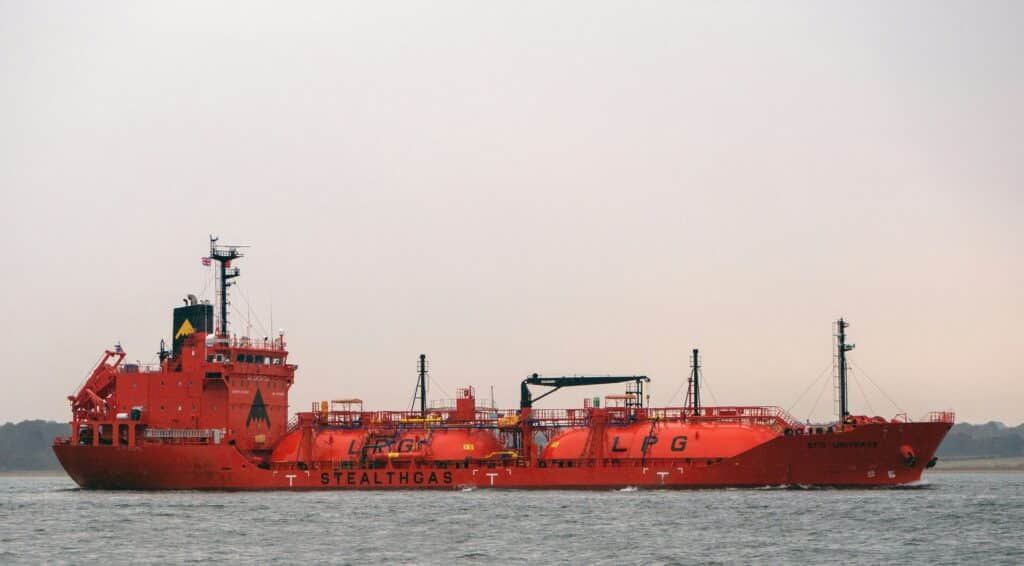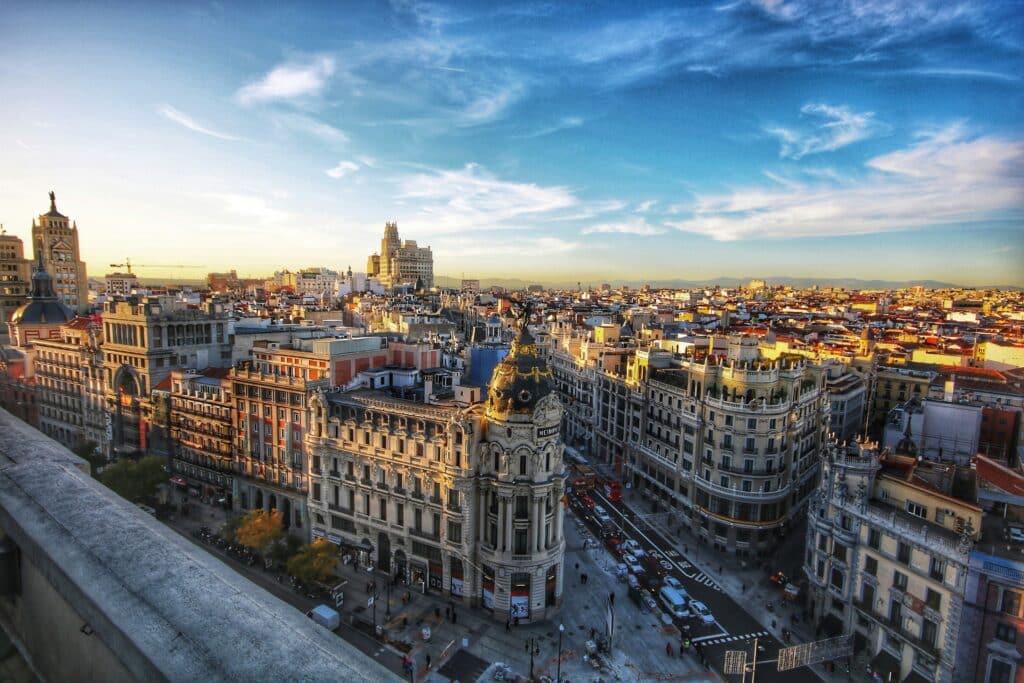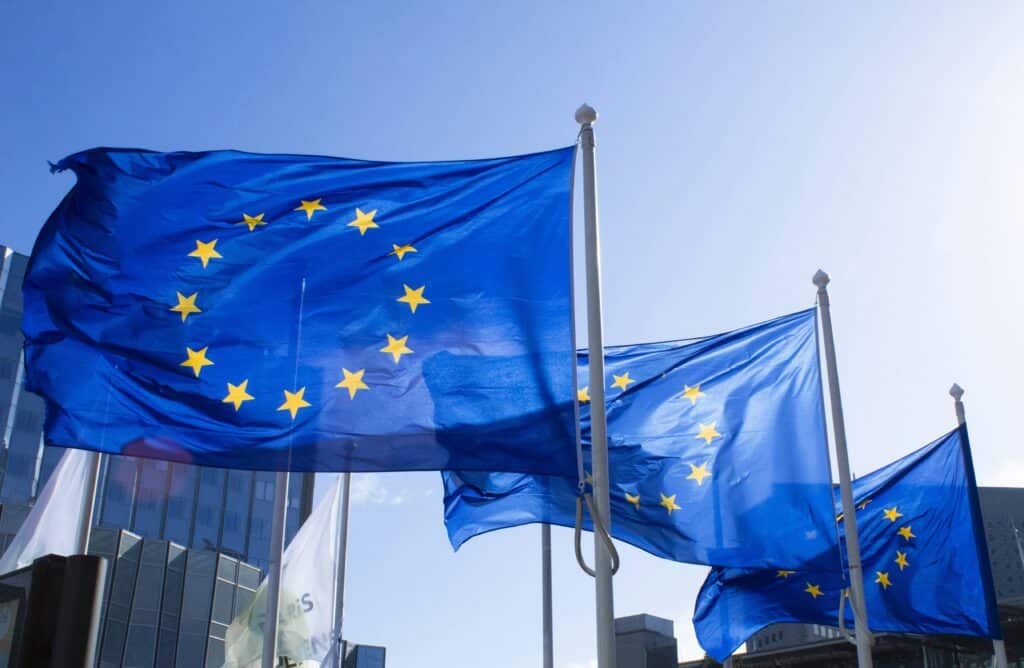The Methane Challenge: Navigating Emissions in the Global LNG Value Chain
This is the second installment of the Topic of the Month: Taking stock of methane emissions regulation
by Roland Kupers, UNEP-IMEO and Andris Piebalgs, FSR
As Europe increasingly relies on Liquefied Natural Gas (LNG) to offset the reduction in energy supply resulting from the cessation of Russian supplies, the importance of addressing methane emissions throughout the LNG value chain grows. The interconnected nature of the LNG industry, with approximately 600 ships traversing the globe to transport the product, underscores the need for a global perspective to understand the challenges at hand. Reducing emissions will require efforts across the entire value chain. Methane emissions, in particular, due to methane’s potency as a greenhouse gas (GHG), were in the spotlight at COP28.
The structure of the LNG business
LNG is produced by cooling natural gas to a temperature of minus 160 degrees Celsius, transforming it into a liquid state. This process reduces its volume by 600 times, facilitating transportation across routes where pipelines are impossible, such as from US to Japan or Qatar to Europe. Upon reaching its destination, the liquefied gas is reheated, using either gas or, less commonly, seawater before entering the pipeline distribution system.
The LNG production process requires significant capital investment, particularly for the liquefaction plant, while ships and regasification facilities represent a smaller portion of the investment. Due to this substantial capital requirement, financiers typically demand a secure gas supply throughout the plant’s lifetime. Consequently, nearly all LNG plants are accompanied by dedicated upstream facilities, either through shared ownership or long-term supply contracts. An exception to this trend is the United States, where the gas market’s size and deep liquidity provide sufficient assurance to funders regarding the long-term gas supply.
For many countries, LNG supply holds both political and commercial significance, serving as a crucial component of energy security. Similar to pipeline projects, which also involve strong government participation despite their commercial nature, LNG supply is influenced by political considerations.
Traditionally, the largest markets for LNG are Japan and Korea, which still represent a third of global demand. The dominant structure of the LNG market revolves around long-term contracts, reflecting the combination of energy security needs and the requirement for bankable offtake agreements.
The LNG market continues to expand annually, with projections indicating that the vast majority of new volumes between now and 2030 will originate from the expansion of Qatari and US export capacities. Both Qatar and the US serve as key suppliers to major European and North Asian markets, functioning as swing suppliers in response to market demands. At the same time EU gas demand is projected to decrease by almost 80% by mid-century, due to decarbonisation. It is expected that over time, buyers will be able to discriminate between lower emission suppliers.
Overall, the LNG market’s growth is driven by a mix of factors, including strategic partnerships, infrastructure investments, and evolving market dynamics. As the industry continues to evolve, addressing methane emissions across the LNG value chain becomes increasingly imperative, particularly considering LNG’s crucial role in global energy supply.
Emissions in the LNG supply chain
Currently, methane emissions in the LNG supply chain are predominantly estimated using generic emission factors rather than empirical measurements, aligning with practices in the broader oil and gas industry. However, this approach is undergoing a significant shift. Over 80% of global LNG volumes are now covered under the United Nations Environment Programme’s Oil and Gas Methane Partnership 2.0 (OGMP 2.0), comprising 130 global oil and gas companies committed to transitioning from estimation to empirical measurement of methane emissions. This transition is poised to bring unprecedented transparency to the LNG sector as empirical data becomes available, along with the appropriate quality assurance processes.
While the current agreement is that UNEP discloses only consolidated company data, primarily due to US Securities and Exchange Commission’s stock market regulations, this limitation may be transformed as policymakers and civil society demand greater transparency, provided appropriate safeguards are in place.
Scientific studies facilitated by UNEP’s International Methane Emissions Observatory (IMEO) and estimates suggest that the majority of emissions occur in the upstream assets supplying LNG liquefaction plants. Therefore, when comparing emissions from future US exports to Japan via the Baja terminal with those from Qatar, the most material contribution would be from comparing emissions from the upstream assets from the US and Qatar supplying LNG liquefaction plants: Texas Permian gas field and Qatar’s North Field.
Emissions from other parts of the LNG supply chain are likely to form a smaller share but present opportunities for mitigation and differentiation. Most LNG plants are expected to report at OGMP 2.0’s highest “level 5” within the few next years. Integrating these data with the next generation satellite observations, will enable IMEO to constitute a Methane Supply Index (MSI), quantifying the emissions along various LNG supply chains.
Assessing emissions from LNG ships poses greater challenges due to their global mobility. Boil-off during transit is common, with the methane slip in ship engines estimated at 3-5% of the gas supplied. Newer vessels have improved performance. The extent of gas venting due to unforeseen circumstances remains unknown and will be investigated in upcoming IMEO science studies.
Regasification plants also contribute to emissions, albeit a smaller component of the overall supply chain. Many import markets are implementing emission regulations, and an increasing number of operators are joining OGMP 2.0, indicating a growing commitment to methane mitigation efforts and delivering direct measurements of the emissions of import facilities, to complete the value chain data.
The important role of JOGMEC
As part of the Coalition for LNG Emission Abatement toward Net-zero (CLEAN) initiative which includes Japanese and Korean LNG buyers, the Japan Organization for Metals and Energy seCurity (Jogmec) has drafted a detailed questionnaire to the LNG suppliers to North Asian markets. Jogmec’s mission is to secure the stable supply of natural resources for Japan, as a government agency.
The questionnaire has been distributed by KOGAS, South Korean public natural gas company, and JERA, the largest power generation company in Japan, to their global suppliers, with support from the Japanese and Korean governments. It requests exporters to provide detail on their methane emissions, their membership and reporting level in OGMP 2.0, mitigation targets, as well as documenting any specific actions taken. Given the very prominent role of Japanese and Korean buyers in the gas market, with their high reputation and excellent credit ratings underpinning the bankability of export facilities, this is potentially an impactful action. Notably, the questionnaire requests disclosure of OGMP 2.0 data at project (asset) level. While the data is collected and submitted to IMEO at asset level, so far public reporting has been consolidated at corporate level, due to SEC requirements for listed companies. An interest from buyers and governments in the project level data could lead to an evolution of the OGMP 2.0 structure for direct disclosure.
Jogmec is actively engaged in partnerships in the region, for example working with Petronas, Malaysia’s integrated multinational petroleum corporation, and Pertamina, the national energy company of Indonesia, to mitigate methane emissions under the ASEAN energy sector Methane Leadership Programme. The feedback from the questionnaires and the best practices collected will be published, subject to the relevant disclosure agreements. Jogmec participates in discussions with US, the European Commission on global methane standards such as OGMP 2.0, for example in the International Working Group on measurement, monitoring, reporting and verification (MMRV) of GHG emissions discussions and other fora.
Next steps
With several methane-related announcements at COP28, the earlier Global Methane Pledge, and the CLEAN project, public demand for increased data transparency and commitments to emission reductions is rapidly growing. Particularly, the forthcoming methane data revolution, facilitated by new satellites and the Oil and Gas Methane Partnership 2.0 (OGMP 2.0), will enable unparalleled transparency across the entire LNG value chain. There is an increasing awareness of the critical need to reduce methane emissions throughout the LNG supply chain. Translating international reduction goals into actionable policies presents challenges, partly due to the LNG supply chain’s complexity, as emissions within this chain are subject to multiple regulatory frameworks. Historically, emission management has been viewed primarily as the responsibility of producing countries, leading to command-and-control policies that focus on upstream emissions. However, as importing countries increasingly prioritize the greenhouse gas (GHG) footprint of their imports, new motivations for transparency and mitigation efforts have emerged. Effective methane mitigation across the LNG supply chain necessitates improved policy coordination between LNG suppliers and buyers.







